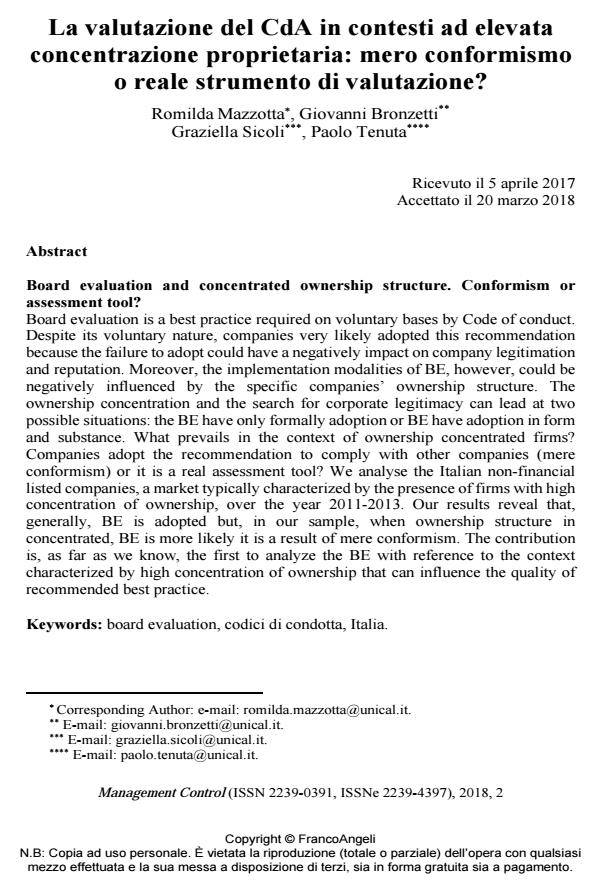La valutazione del CdA in contesti ad elevata concentrazione proprietaria: mero conformismo o reale strumento di valutazione?
Titolo Rivista MANAGEMENT CONTROL
Autori/Curatori Romilda Mazzotta, Giovanni Bronzetti, Graziella Sicoli, Paolo Tenuta
Anno di pubblicazione 2018 Fascicolo 2018/2
Lingua Italiano Numero pagine 22 P. 107-128 Dimensione file 228 KB
DOI 10.3280/MACO2018-002006
Il DOI è il codice a barre della proprietà intellettuale: per saperne di più
clicca qui
Qui sotto puoi vedere in anteprima la prima pagina di questo articolo.
Se questo articolo ti interessa, lo puoi acquistare (e scaricare in formato pdf) seguendo le facili indicazioni per acquistare il download credit. Acquista Download Credits per scaricare questo Articolo in formato PDF

FrancoAngeli è membro della Publishers International Linking Association, Inc (PILA)associazione indipendente e non profit per facilitare (attraverso i servizi tecnologici implementati da CrossRef.org) l’accesso degli studiosi ai contenuti digitali nelle pubblicazioni professionali e scientifiche
Board evaluation is a best practice required on voluntary bases by Code of conduct. Despite its voluntary nature, companies very likely adopted this recommendation because the failure to adopt could have a negatively impact on company legitimation and reputation. Moreover, the implementation modalities of BE, however, could be negatively influenced by the specific companies’ ownership structure. The ownership concentration and the search for corporate legitimacy can lead at two possible situations: the BE have only formally adoption or BE have adoption in form and substance. What prevails in the context of ownership concentrated firms? Companies adopt the recommendation to comply with other companies (mere conformism) or it is a real assessment tool? We analyse the Italian non-financial listed companies, a market typically characterized by the presence of firms with high concentration of ownership, over the year 2011-2013. Our results reveal that, generally, BE is adopted but, in our sample, when ownership structure in concentrated, BE is more likely it is a result of mere conformism. The contribution is, as far as we know, the first to analyze the BE with reference to the context characterized by high concentration of ownership that can influence the quality of recommended best practice.
Parole chiave:Board evaluation, codici di condotta, Italia
Romilda Mazzotta, Giovanni Bronzetti, Graziella Sicoli, Paolo Tenuta, La valutazione del CdA in contesti ad elevata concentrazione proprietaria: mero conformismo o reale strumento di valutazione? in "MANAGEMENT CONTROL" 2/2018, pp 107-128, DOI: 10.3280/MACO2018-002006